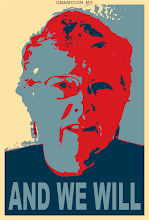Museums Establish Guidelines for Treatment of Sacred Objects
When the Blackfoot Nation approached the Denver Art Museum about borrowing a horse shawl for a ceremony a few years ago, the museum faced a quandary. Curators were eager to oblige, but they worried that the ritual would expose the early-20th-century relic to the damaging effects of horse sweat. After a delicate negotiation, a compromise was reached: The tribe would use the object in the ceremony without actually putting it on the horse.
The story is not unusual. As American Indian and other groups have become increasingly assertive about guarding their cultural heritage, museums have struggled to strike a balance between the traditional practice of collecting indigenous objects as art and the often competing interests of the people whose ancestors produced them. In many cases federal laws have enabled tribes to reclaim works outright.
Now the issue has become pressing enough that the leading association of art museums is asking its members to take “special consideration” when dealing with what it terms sacred objects. In guidelines be released today, the Association of Art Museum Directors calls on museums to consult with indigenous groups to determine what works might fall into this category and to accommodate the wishes of these groups as far as possible in displaying, conserving and even discussing these works on museum labels and in catalogs.
The guidelines, which have been approved by the association’s membership but are not binding, are intended to apply to indigenous and other religious groups both inside and outside the United States, including American tribes that have not been federally recognized.
The recommendations exceed the requirements set by the 1990 Native American Graves Protection and Repatriation Act, known as Nagpra. That law, which specified the criteria under which groups could reclaim burial remains and objects deemed to have special sacred or cultural value, applies only to federally recognized tribes. And in cases when objects did not have to be returned, museums did not have to collaborate with tribes on their
care.


Links to this post:
Create a Link
<< Home